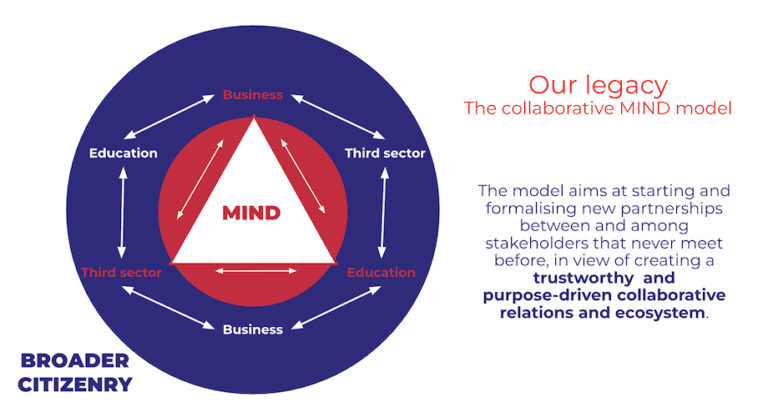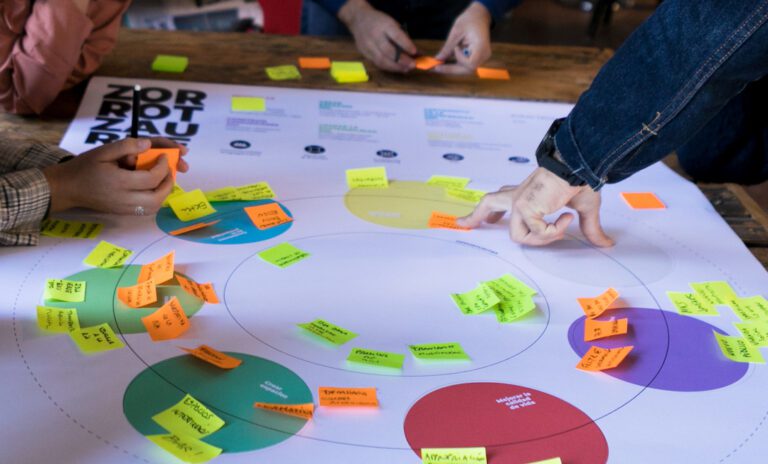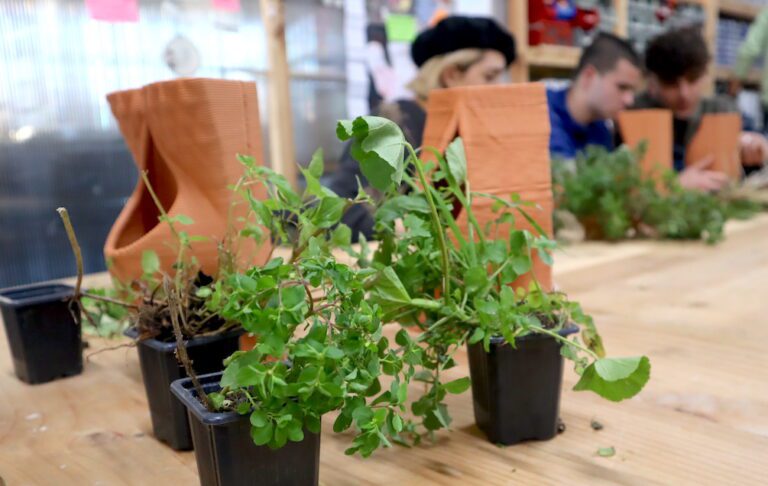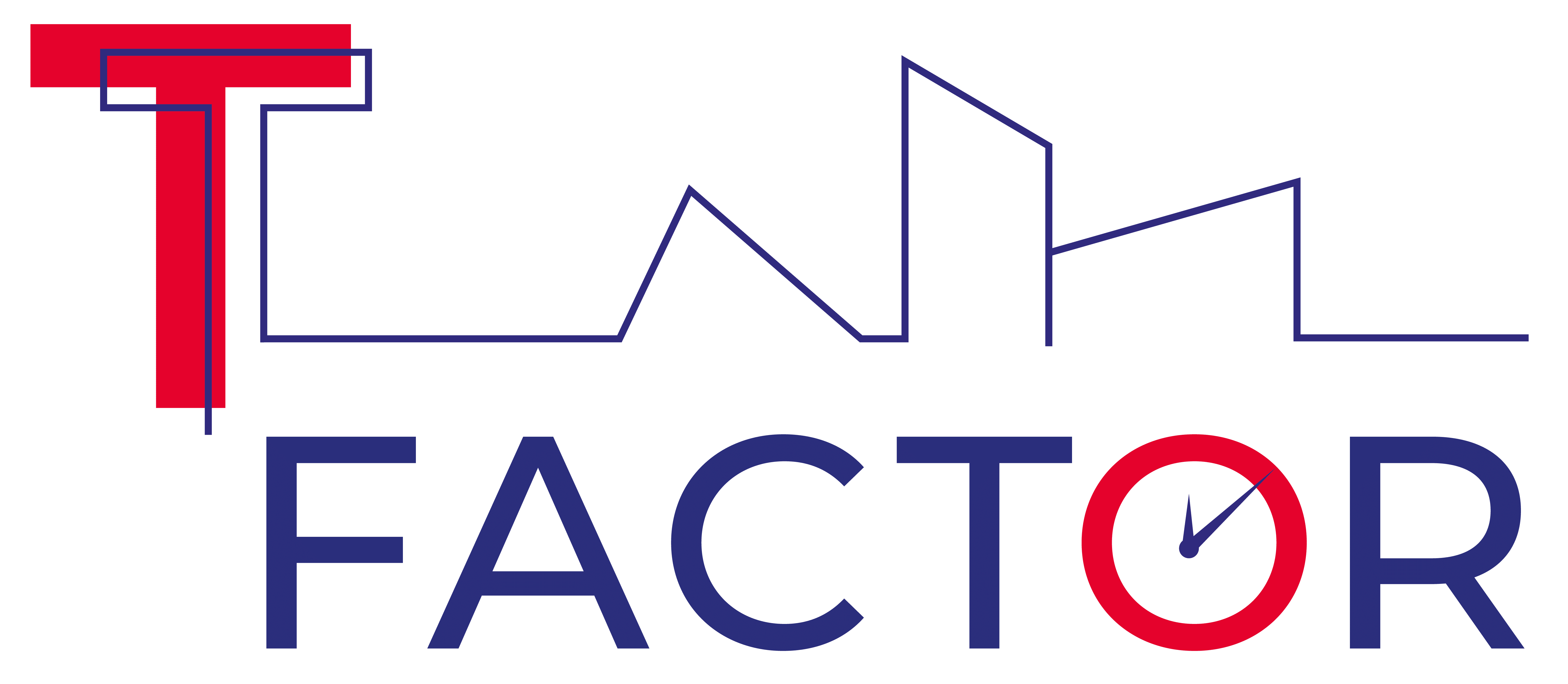T-Factor learnings from MIND and Zorrotzaurre
The pilots of MIND and Zorrotzaurre are developing initiatives related to leveraging multi-stakeholder collaboration and engaging youth people with challenge based approaches. During the T-Factor Learning Series focused on youth empowerment and multi-stakeholder collaboration, the two local coalitions showed in a practical way how they are articulating their collaborations with other stakeholders for the activation of meanwhile mission-oriented uses.
Milan, multi-stakeholders’ collaborations based on common interests
Milan Pilot is being developed at MIND – Milan Innovation District, a regeneration project located at the north-west periphery of the city of Milan. The pilot developed by T-Factor local coalition faces some complexities related to the singularities of this new innovation district, which emerged as an EXPO 2015 legacy project. One of them is the absence of an initial community as MIND was an empty land before Expo15, surrounded by 14 fragmented municipalities. As today the main stakeholders are businesses, the area is mainly used in working hours. Another peculiarity is the diversity of stakeholders that participate in the regeneration project. MIND is is a Public-Private partnership (Arexpo – Lendlease) based on five Public Anchors: Galeazzi Hospital, Fondazione Triulza, Human Technopole Foundation, University of Milan (Unimi), Polytechnic of Milan.
As Milan local coalition explained at the Learning Series, they started with a collective process to map the surrounding ecosystem, including discussion tables with different stakeholders (business, not for profit and educational organisations) to identify the needs, strengths and relations already in place. From there, they selected the most appropriate actors to start the pilot with, and developed a collaborative model, aimed at starting trustworthy and purpose-driven collaborative partnerships.

Based on this collaborative model, these are some of the activities that MIND local coalition has carried out during the last months:
MIND Community House and FuturAbile: A symbolic space for collaboration among different stakeholders which connects actors within and outside MIND avoiding isolation. The first initiative of the Community House is FuturAbili, a free career guidance path for youngsters between 18 and 34 years old aimed at stimulating their interest in the skills needed for future professions. The topics of these courses are artificial intelligence, Industry 4.0, Advanced Materials and 3D Prototyping. The initiative has been co-designed between the Local Coalition of T-Factor together with the partners of the initiative: the technological company ROLD, the innovation hub DesignTech,the local consortium of social cooperatives CoopeRho, and Fondazione Triulza.
Guided Tours: to help citizens and other external agents to get to know the MIND regeneration project, the T-Factor local coalition designed free guided tours in MIND with the involvement of the MIND Anchors, explaining their mission, main projects and future developments. Based on this positive experience, other tours have been organised by other stakeholders, such as FAI- FondonAmbiente Italiano, or Open House.
T-Probes, walkshops and alternative mapping: Itinerant workshops to explore the area and collect people’s perceptions and expectations, with key actors from the local community: MIND’s tenants, local associations, local public institutions and citizens, led by T-Factor partner LAND.
Herbula Garden: An innovative herbal garden aimed at raising awareness about the urban biodiversity and the possible uses of local plants and herbs. The garden was designed thanks to the collaboration of Polimi, PlusValue, LAND, the support of the developer Lendlease, and the sponsorship of Harpo and WoodBlocX.
Herbula Lab experiments with schools: The design of a section within the temporary garden to experiment with biodiversity and agricultural innovation. This initiative has involved students and teachers of an agricultural high school, Instituto Pareto. Now, around 30 students are working on the selection of local herbs to be planted in the area, and identifying recipes for using these plants.
BiodiverCity@MIND Schools: The T-Factor MIND coalition is working with primary and secondary schools from the surroundings, involving students in the creation of nature based solutions such as bug hotels and seed bombs. The objective is to encourage students to learn about the importance of urban biodiversity.
Learnings so far
The local coalition shared with us the key lessons they have learned through these activities:
- Mapping is an ongoing process and the goal is to move towards a network map, in which every stakeholder becomes a focal node who can generate new opportunities.
- Selecting is part of the process, and the success of the activities highly depends on who you got onboard. You cannot involve everybody from the beginning, but you can include other actors gradually.
- Leveraging multi-stakeholder collaborations takes a lot of time.
- You have to learn to speak the stakeholders’ language, take their needs and interests into account, and find the right balance in your strategy.

Bilbao, building bridges between different actors
Zorrotzaurre is an artificial island located in the northwest end of Bilbao, a post-industrial area that is now immersed in a profound regeneration project. T-Factor’s Bilbao pilot is focused on unleashing the potential of meanwhile uses to find new opportunities related to strengthening local communities.
The Bilbao Pilot has three main lines of actions:
Mission 1: Aimed at fostering the collaboration between Universities and grassroots initiatives.
Mission 2: Collaborative governance, developing participatory schemes of governance that integrate different actors in order to achieve more inclusive and sustainable urban transformation.
Mission 3: Enabling regulation, developing clearer regulations to facilitate temporary uses in urban areas.
During the Learning Series on youth empowerment and multi-stakeholder collaboration, the Bilbao team focused their presentation on the main challenges, actions and learnings related to Mission 1 and the design and development of three official learning modules with the collaboration of local Universities and based on social challenges identified in the area.
One of the milestones of the process was the Innovation Jam, held in May 2022. In this 2-days event, local Universities, grassroots and T-Factor international partners worked together to co-design the learning modules. The main objective of each module was to devise and develop a temporary use prototype in response to a local challenge, through the collaboration with grassroots initiatives.
On September 2022 the the learning modules were launched together with the three local Universities:
Urban Design for Sociality and Wellbeing, with IED Kunsthal, focused on how temporary uses can contribute to test new forms of social inclusion in Zorrozaurre.
A Circular Island, with Mondragon Unibertsitatea, aimed at designing a resource sharing system that supports sustainable economic development and conviviality in the island.
Climate Resilience at Neighborhood Level, with Deusto University, to explore how temporary uses can contribute to making Zorrotzaurre public space greener, more attractive and resilient to climate change.

These are some of the activities developed within the learning modules, as an example of leveraging grassroots’ knowledge to foster new collaborations and creative proposals:
A refugee camp for plants: a workshop held by GodotStudio where students rescued plants that were in danger of being destroyed by excavators, and put them in a new habitat: structures made with biomaterials using 3D printing.
Ecology Talks Project with UAL: Students documented in video non human life forms, using non conventional art activities to put in value things that are not priorities in traditional urban planning projects.
Exploring the idea of memory: versus the grey and standardised approach of memorials, students explored more colourful and participatory new rituals. This included a workshop on creating ritualistic objects with the designers of Studio Petit Muller.
The capacities developed through the learning modules with the students are mostly soft-skilled related, such as co-creation, problem-solving, critical thinking, sustainable design, empathy and active listening.
The key learnings identified by the local coalition so far are:
- Importance of flexibility, and the capacity to change the approach in order to provide equal opportunities to all the actors.
- Build trust among all organisations, ensuring a real response to expectations created.
- Establish challenges based on needs and interests of each agent, opening the participation to everyone but not forcing anyone to participate.
- Different levels of implication but same commitment: actors can be implicated differently in terms of dedication, but the commitment is the same.
- The importance of listening and mediating when problems are beyond T-Factor’s field of action.
One of the main challenges that face the Zorrotzaurre neighbourhood is the high level of uncertainty regarding the future of the island and of the grassroots initiatives that are currently there. This leads to a difficulty to create trust, but, as Bilbao local coalition highlighted, the T-Factor pilot has also served to build bridges between different actors that coexist in the island, finding new ways to collaborate with each other with a common interest.
Watch the T-Factor Learning Series focused on youth empowerment and multi-stakeholder collaboration:


